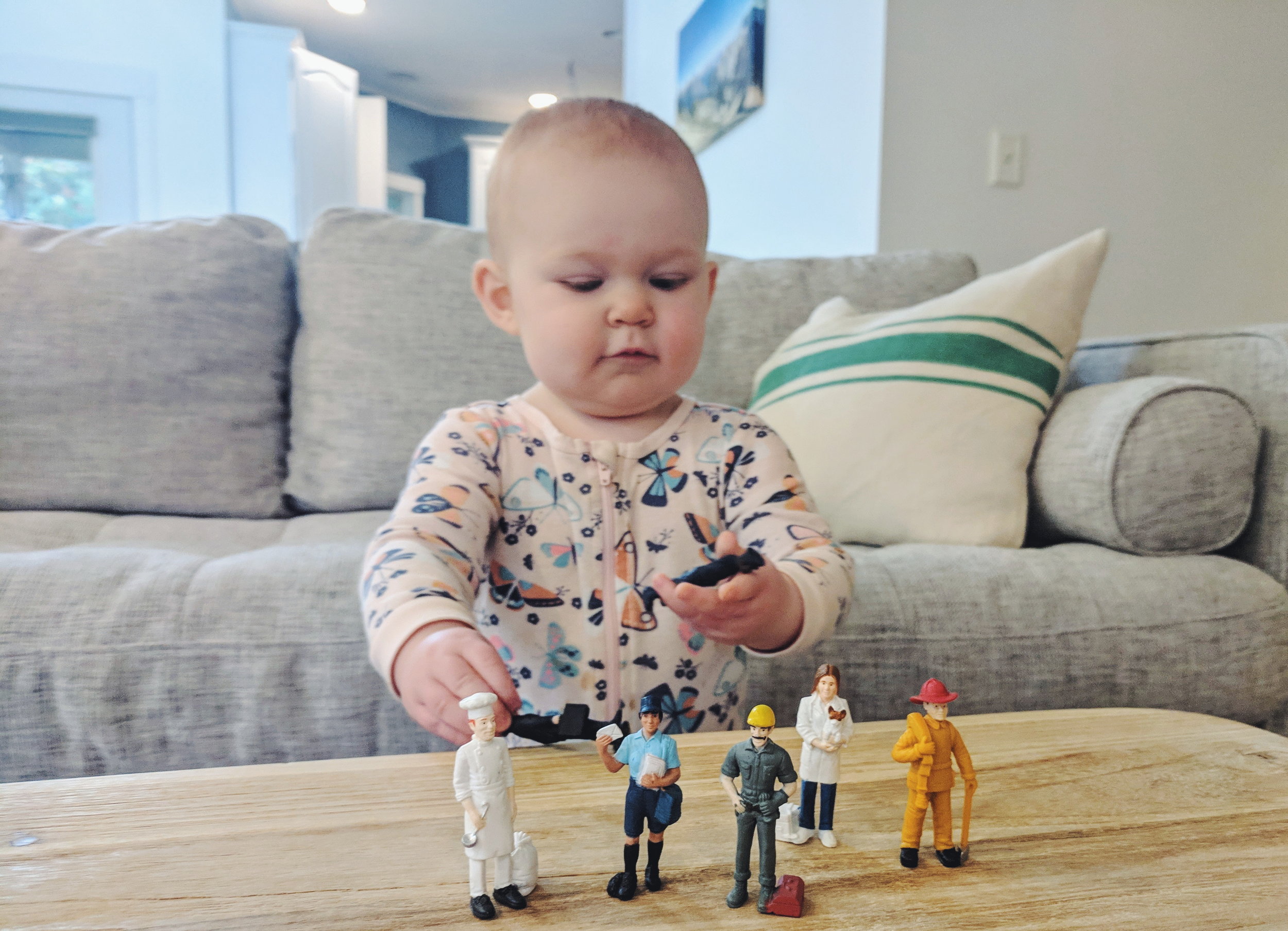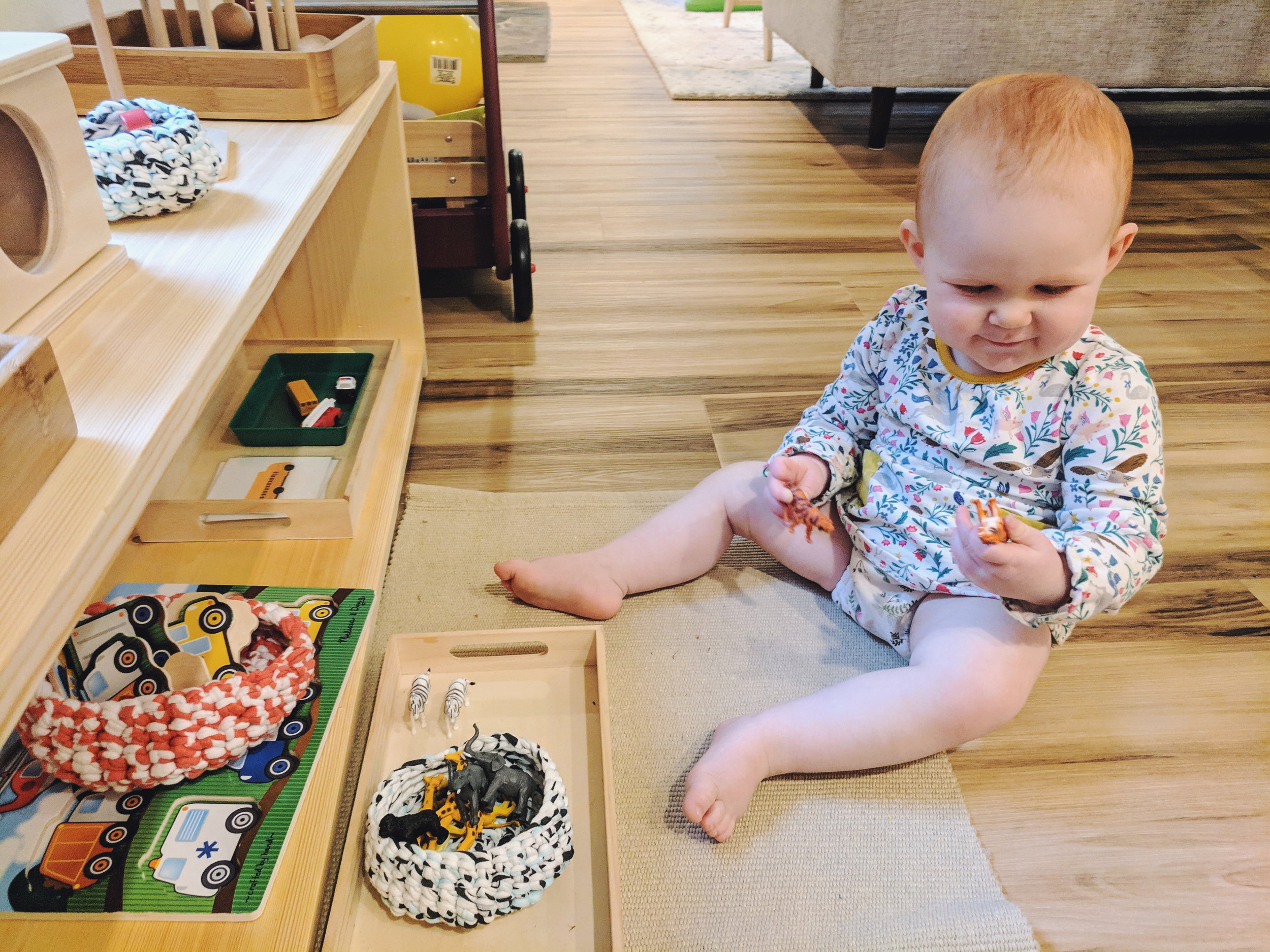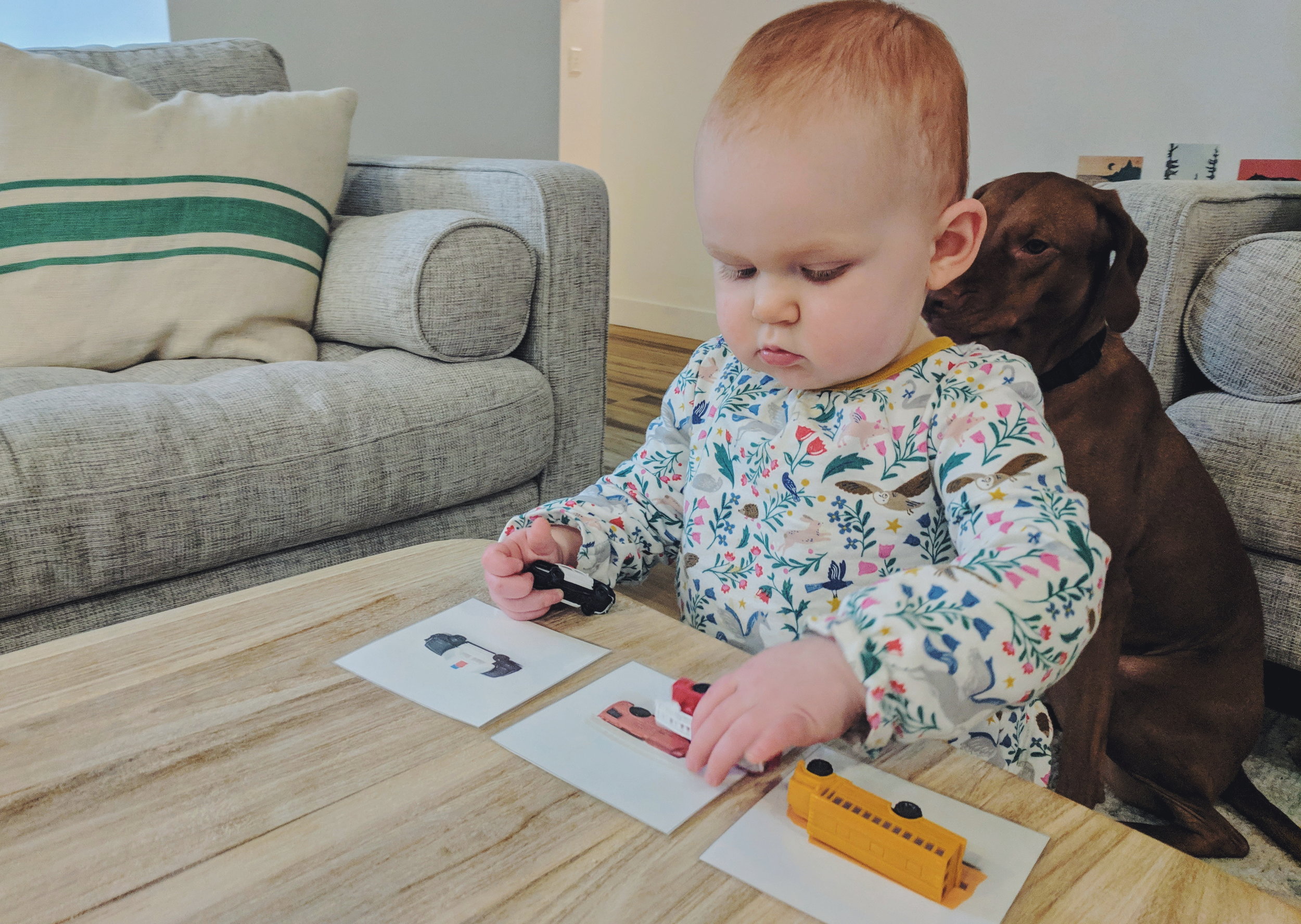Introducing Language Work
Montessori in Real Life
D is 16 months, and soaking up language like a sponge. She points to everything, wants a name for it, and often tries to say it back to us. We’ve used baby sign since 9 months, and that is still her primary way to communicate her needs. (In video below, she is signing “help please”). But she also has so many more words in her head than she can say out loud (and that I know the sign for), so this month has been all about activities to help her expand her receptive and expressive language.
Montessori or not, some of the best ways to expand babies and toddlers’ vocabulary are books, songs, and simply talking through your day with them. While I try not to use too many words while D is playing/concentrating on her own, I talk to her a lot throughout the day, whether it’s about what we are having for dinner, dressing after using the potty, or what we see while we’re out on a walk. She soaks it all in. There are board books for her throughout the house, and she loves to sit in her little chair and read to herself or have me read to her. Books are a favorite part of both our days. Her favorite language activity lately is her book of fingerplay songs. She opens the book and points to a song/rhyme and I do the fingerplay for it. It’s super sweet to see her start to mimic the movements on her own. Her other favorites are action songs that of course involve spinning and dancing.
While books and stories are a very important component of language learning, Montessori also believed in starting with the concrete: “What the hand does the mind remembers”. Toddlers learn best through all their senses, especially their hands. When toddlers are first learning language, they get so much more out of holding an object than they do from a photo or picture of an object. Since D was just a baby, and still today, I’ve given her lots of real objects to touch and explore, such as fruit and vegetables, kitchen utensils, household items and containers, and animal replicas. The more realistic, the better.
Labeling/Asking
D’s favorite items to explore now are any small replica objects (made by Toob), such as vehicles, animals, community helpers, and tools. I usually have at least one basket of objects (that fits in one category) on her shelf. To introduce this material, I start by taking one object out at a time and labeling it, for example, “delivery truck”. I repeat this with all the objects. Then I invite her to find each object to put back in the basket. If she doesn’t want to, that is fine! I also just let her explore the objects on her own, and provide labels if she asks for it. Below is an example of her exploring, and me labeling, real fruit.
Matching Object to Object
The next level up in Montessori language materials is object to object matching. Again, this involves tangible items for her to explore, but this time, pair together. When starting out, it’s easiest for toddlers to do this with identical sets of objects, rather than similar items. So I found a some inexpensive sets of animals at the local toy store to set up a “wild animal” matching activity. You can also use two sets of these Toob wild animals. When I first introduce the material, I take out one animal and label it, e.g. “elephant”. Then I find the other elephant in the basket, label it, and set it down right next to the first elephant. I repeat with the rest of the animal pairs in the basket (5-6 pairs max). Then I let her explore. Though she doesn’t line the animals up as I do yet, she has started to pick out two of the same animal from the basket, noticing the sameness. No matter how she plays with this material, she’s learning!
Matching Object to Picture
Just this week I introduced object to picture matching, which is still quite a challenge for D, but a favorite of hers to explore and have me help with. Instead of matching the animal/fruit/vehicle to an identical object, she has to match it to a picture of that object. For toddlers, the more identical the picture is to the object the better, so I created my own laminated cards using photos I took of the objects at home. You can find pre-made language cards or photos online but they it’s harder to match the objects in size and details. In the examples below, I used the Schleich farm animals (large replicas), and Toob vehicles (small replicas). I’m sure I will be making many more sets of these in the near future!
As with all labeling, when I present this, I do so slowly and with few words, so she focuses on what my hands are doing and the names of the objects. I lay out all the cards first, naming each one as I set it down. Then I pick up an object from the basket, e.g. fire engine, label it, and put the object over the matching card, covering the picture, then repeat the word. I repeat this sequence with each object. I find 4 matches to be the maximum for young toddlers. D enjoys covering up the pictures with the objects, even if she doesn’t always match perfectly! Again, it’s about the learning process rather than the product!





